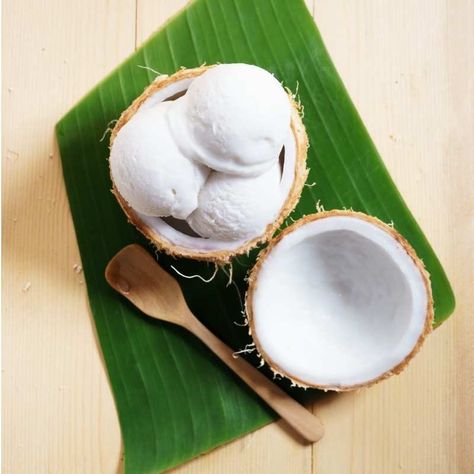Close your eyes for a moment and imagine this: the sun is setting, the air is warm, and you’re craving something that’s equal parts refreshing and indulgent. Now picture yourself holding a bowl of creamy coconut ice cream , its velvety texture glistening under the golden light. With every spoonful, you’re transported to a tropical paradise, where the sweet, nutty flavor of coconut dances on your taste buds. Whether you’re a lifelong fan of coconut or simply looking for a dairy-free dessert option, this treat promises to be your new go-to dessert. By the time you finish reading this article, you’ll know everything there is to know about making, enjoying, and savoring the magic of creamy coconut ice cream.
Why Creamy Coconut Ice Cream is a Must-Try Dessert
The Allure of Coconut Flavor
Let’s start with what makes coconut such a beloved flavor in desserts. Coconut has a unique taste profile—sweet, nutty, and slightly tropical—that pairs beautifully with other flavors. Think of it as a blank canvas for creativity. You can combine it with chocolate for a rich, decadent treat, mix it with mango for a fruity twist, or even drizzle caramel over it for an extra layer of indulgence. Its versatility makes it a favorite among chefs and home cooks alike.
Coconut isn’t just delicious—it’s also nostalgic. For many, the scent and taste of coconut evoke memories of beach vacations, tiki drinks, and summer barbecues. That emotional connection is part of what makes creamy coconut ice cream so irresistible.
Health Benefits of Coconut-Based Desserts
While indulging in ice cream might not seem like the healthiest choice, creamy coconut ice cream offers some surprising benefits. Coconut milk, the star ingredient, is rich in medium-chain triglycerides (MCTs), which are known to provide a quick source of energy. Unlike other fats, MCTs are metabolized differently by your body, making them a popular choice for those following keto or low-carb diets.
Additionally, coconut milk is naturally lactose-free, making it an excellent option for anyone with dairy sensitivities. According to a 2022 report by Grand View Research, the global plant-based food market is expected to grow significantly in the coming years, driven by increasing consumer demand for healthier and more sustainable options. Creamy coconut ice cream fits perfectly into this trend.
Perfect for Dietary Restrictions
One of the biggest advantages of creamy coconut ice cream is its inclusivity. Whether you’re vegan, lactose-intolerant, or simply trying to reduce your dairy intake, this dessert has got you covered. Many store-bought versions are certified vegan, and homemade recipes often require just a few simple, plant-based ingredients.

How to Make Creamy Coconut Ice Cream at Home
Ingredients You’ll Need
The beauty of making creamy coconut ice cream at home lies in its simplicity. Here’s a list of ingredients you’ll need for a basic recipe:
Step-by-Step Instructions
- Blend the Base : Start by combining the full-fat coconut milk, sweetened condensed milk, vanilla extract, and a pinch of salt in a blender. Blend until smooth and creamy. This mixture will serve as the foundation of your ice cream.
- Chill the Mixture : Pour the blended mixture into a bowl and refrigerate it for at least 2 hours. Chilling helps enhance the creaminess and ensures a smoother texture during churning.
- Churn the Ice Cream : If you have an ice cream maker, pour the chilled mixture into the machine and churn for 20–25 minutes. The result should be a soft-serve consistency. If you’d like to add shredded coconut or other mix-ins like chocolate chips, fold them in gently after churning.
- Freeze Again : Transfer the ice cream to an airtight container and freeze it for 4–6 hours. This step firms up the texture, making it scoopable and ready to enjoy.
Tips for Extra Creaminess
To achieve the silkiest texture possible, here are a few expert tips:
- Always use full-fat coconut milk. Lower-fat versions won’t provide the same richness.
- Chill your ice cream bowl before churning to prevent melting during the process.
- Avoid overmixing the base, as this can introduce air and lead to iciness.
Pages: 1 2

